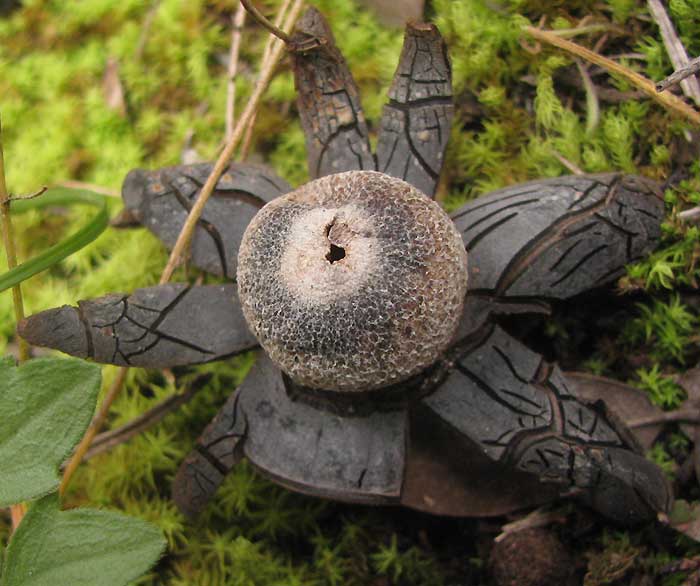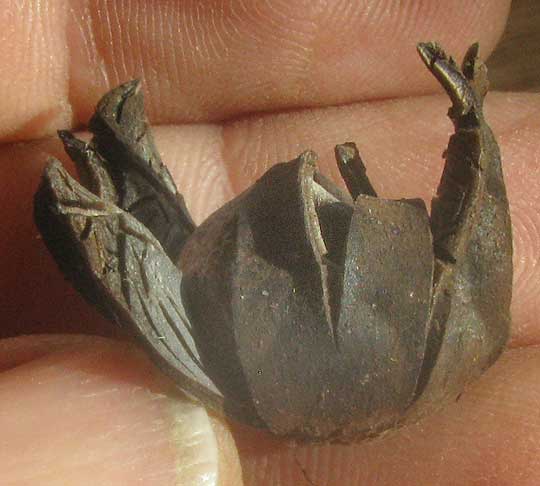Excerpts from Jim Conrad's
Naturalist Newsletter

from the December 15, 2013 Newsletter issued from the Frio Canyon Nature Education Center in the valley of the Dry Frio River in northern Uvalde County, southwestern Texas, on the southern border of the Edwards Plateau; elevation ~1750m (~5750 ft); N29.62°, W99.86°; USA
BAROMETER EARTHSTAR
On the slope below Juniper House, where the power company has cut a swath of trees for their lines, on thin, moss-covered soil, the pretty little object turned up shown above. The spherical centerpiece, which is basically a typical puffball fungus filled with spores, is only half an inch across (15mm).
If you walk in wild places looking at the ground you've seen this kind of thing before, and probably know that it's a kind of fungus known as an earthstar. However, there are many earthstar species, so part of the fun becomes figuring out which species this is.
Most earthstars I've run into belonged to the genus Geastrum, but it turns out that this one belongs to an entirely different genus, Astraeus. It's ASTRAEUS HYGROMETRICUS, often known as the Barometer Earthstar, but also as the False Earthstar -- "false" because it's not a member of the "true earthstar genus," Geastrum. The "hygrometricus" in the binomial beans "hygrometer," or wetness-measurer, but barometers seem to be better known than hygrometers, so it's the Barometer Earthstar. The name was chosen because when the air is moist the "arms" surrounding the puffball open up, forming the star. But when the air is dry the arms close up. Below, you can see the same earthstar pictured above after spending a day on a saucer in my dry room:

The Barometer Earthstar occurs worldwide, except in polar regions and cold temperate areas. The Wikipedia expert says that the species grows on rocks and prefers acid substrates like slate and granite, while avoiding substrates rich in lime. Our soil is very rich in lime, so maybe that's why I've only seen one here, while in many areas they appear to be very common.
The subterranean, white network of root-like mycelia -- of which the earthstar is no more than the reproductive body -- form ectomycorrhizal associations on roots of various tree species, especially oaks and pines, and especially in sandy soils. Here we have plenty of Texas Liveoaks, but our soil is very thin and clayey. Mycorrhizal associations are extremely important to the ecosystem in various ways, such as improving a tree's carbohydrate storage capacity and enhancing the plant's access to dissolved minerals; if you're unfamiliar with the matter, our mycorrhiza page is at https://www.backyardnature.net/f/mycorhza.htm.
In Asia, Barometer Earthstars are prized as good eating, but in North America the species is regarded as not toxic, but too tough and unpleasant tasting to bother with. Possibly the Asian species actually is different, or maybe people there just have different tastes.